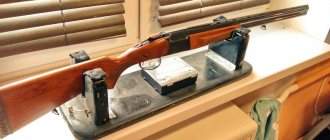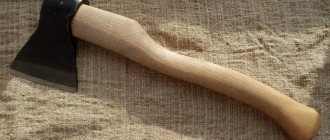How did they shoot with a bow in the Middle Ages? The most correct answer is “different.”
For example, the anonymous author of the 6th century Byzantine treatise “On Strategy” reports that there are three ways to grab the bowstring:
- three middle fingers;
- thumb (the thumb pulls the string; the index finger lies on top of the thumb);
- index finger (thumb rests on top of index finger).
The author recommends that all archers master all methods of string tension and change them when their fingers get tired. He goes on to say that the string can be pulled to the ear, to the neck or to the chest. As we can see, even in one country and in one era there were many methods of shooting.
In Persian, Roman, Mediterranean and Mongolian
The treatise “Strategikon” attributed to Mauritius (Byzantium, 6th century) states that archers should be able to shoot in the “Persian” and “Roman” way.
Doctor of Historical Sciences Vladimir Vasilyevich Kuchma (it was he who translated the “Stategikon” into Russian), gives a version that the Persian method is to grab the bowstring with three fingers, and the Roman method is to grab the bowstring with three fingers, and the Roman method is to grab the bowstring with the thumb and forefinger.
Now the grip with the index, middle and ring (or middle and index) is usually called “Mediterranean”
But gripping the bowstring with the thumb, on top of which the index finger (or index and middle fingers) lies, is usually called “Mongolian”.
There are thousands of medieval images of archers Medieval. The images are often very conventional, schematic, and proportions are not always observed in them. In many images, archers stand in positions that seem awkward at first glance. Can these images be trusted?
How to Shoot a Composite Bow
The shape of the bow must be correct, this is important, but you also need to be able to shoot from it. Instructions for right-handed people (left-handed people should simply switch their hands):
- Take the bow with your left hand.
- Grab the string with your thumb and secure it with your index finger, with your palm facing outward. At this moment you are already holding the arrow
- Raise the bow above your head and bring it down sharply with both hands. This way you will overcome the strong tension on the bowstring.
- Aim for a second and a half and open your index finger, loosening your thumb. The arrow will fly an amazing distance.
Izbornik of Svyatoslav and the last Indian
In many cases they can be trusted. Let me give you an example. In the lower left corner of the image there is an archer from the Izbornik of Svyatoslav (Kievan Rus 1070s)
I was sure that this drawing was completely unrealistic; I was especially surprised by the location of the arrow between the fingers of my left hand. But one day I saw a photograph of Isha, the last Indian from the Yahi tribe, who spent his entire life earning food with a bow and arrow. The grip, as you can see, is similar.
Fans of alternative history would probably draw conclusions about the contacts of the ancient Slavs with the Indians. Perhaps this version would even feature birch bark spaceships and a portal to the star Sirius, or a great Slavic-Indian empire on two continents
I'll draw a more realistic conclusion: there are many ways to hold a string and a bow, but still their number is limited, so you shouldn't be surprised. I will only note that it turns out that the drawing from Svyatoslav’s Izbornik is quite realistic.
Asian bows
The composite bow, the photo of which is below, was especially widespread in Asia. There they were worn by foot archers. Such bows had a length of no more than 150 centimeters. Most often in Asia they shot light arrows - either with a canopy at a distance of about 150 meters, or aimed no further than 50-70 meters. Heavy arrows were rarely used, but with them the bow was dangerous already at a distance of about 225 meters, which was a very serious distance for those times.
In Western Europe
From Byzantium and Rus' we move on to Western Europe. It is the methods of archery in medieval Europe that will be the main topic of this article.
Most often in images we see such a picture. The bowstring is held by the middle and index fingers (less often three); the hand of the pulling hand is retracted behind the ear, or to the collarbone; the arrow lies on the supporting hand from the side of the four fingers (for a right-handed person - to the left of the bow).
On the left are English archers from the manuscript “The Pageants of Ricard Beauchamp, earl of Warwick” written in the 1480s. On the right are modern English archers. The bearded man is Mark Strenton, a Guinness Book of Records record holder. His bow has a draw weight of 200 lbf.
Disadvantages of Composite Bows
If you are planning to buy a bow, then you will not experience any particular disadvantages of a composite bow. However, ancient people constantly had problems with them, because it took a very long time to make such complex weapons, and this process was extremely complex. In addition, traditionally such bows were glued with animal glue, which in high humidity conditions lost its adhesive properties and durability. Because of this, the onions needed to be constantly dried.
Now these disadvantages are not very relevant, since purchasing a composite bow in a store will not be at all difficult.
Advantages and disadvantages
What can be said about this method of shooting?
Advantages.
First, the further the string is pulled, the more energy the bow stores. And the more kinetic energy the arrow will receive.
Obviously, when pulling “behind the ear,” the energy stored by the bow will be maximum.
Secondly, there is little chance that the bowstring will touch clothing or armor. Even a helmet does not create a serious obstacle with this method of shooting.
Flaw.
The hand of the pulling hand can change its position from shot to shot, located slightly higher, lower, to the left or to the right.
This will affect accuracy, because a consistent stance is the key to high accuracy of fire. The position of the hands and head should be uniform, just like that of a rifle shooter.
You can hunt with a bow and crossbow in Russia
Bow hunting (“bow hunting”) is popular in some countries, but in Russia it is prohibited.
Bows and crossbows sold in our stores are classified as sports throwing weapons. In our country there are restrictions on bows with a draw force of more than 27 kilograms and crossbows with a draw force of more than 43 kilograms.
Arrows for them are sold for sports, not hunting. And if you go into the forest to shoot at targets and a sports arrow sticks into a wild boar, the animal may be offended. And come to you with complaints.
The squirrel, of course, is unlikely to come to test your license, but you should try to hit it first.
Currently, about one million bows and crossbows are in the hands of the population of our country. The feeling is that in Russia, just like in England in the good old days, there is a reserve of professional shooters. Apparently, in case the ammunition for the firearm runs out.
Without the participation of consciousness
It is likely that with this shooting technique, the archers shot purely intuitively, without aiming, in much the same way as we throw snowballs or stones (aiming is carried out as if without the participation of consciousness).
Although, it cannot be ruled out that the arrows could be guided by the tip of the arrow, the shoulder of the bow, etc. An Arabic treatise from the 15th century also talked about aiming methods.
Next, I will give a fragment of the work of candidate of historical sciences Alexander Medvedev “Hand throwing weapons (bow and arrows, crossbow) of the 8th-14th centuries.” The book contains a translation of a fragment of this treatise {Arab Archery, p. 51.}
“First method of aiming: The arrowhead is placed in line with the target and sighted alternately with one eye and the other on the outside of the bow (left) and finally aimed with the left eye.
When the tip hits the target, the archer immediately releases the arrow with a quick release of the bowstring.
Another variation of this method is to place the tip in line with the target, take focus with both eyes, and aim with the left eye from the outside of the bow through the tip onto the target, while the right eye focuses on the handle of the bow, which completely blocks it from target.
In this case, the head is held straight, and the upper horn of the bow is slightly inclined to the left. This method of Abu Hashim al Mawardi, as well as the Persian archers and kings, was, according to the author of the Arab manual, an ancient and universal method of precise aiming, which he himself adhered to.”
Design Features
Over the course of centuries of history, the design has remained virtually unchanged.
- The shaft blanks were cut from maple or birch, soaked and evaporated, they were connected using leather and tendons, giving shape. Scythian weapons of a sigmoid shape are considered classic.
- The components were reinforced with overlays on both the external and internal sides, using different materials for optimal energy storage during tension.
Homemade compound bow. - Without a bowstring, the Scythian bow bends strongly forward. The tension resistance is extremely high, so the bowstring must have increased strength. It was woven from several separate threads, using different materials - from silk to animal intestines
- The working properties of the bowstring were not least influenced by the weather, so the archer always had several options in stock.
Similar design principles are used in modern block models.
Touching your face
The next group of images is significantly smaller than the previous one.
The string is held by the middle and index (less often three) fingers, the fingers of the pulling hand touch the right half of the face, approximately under the eye, sometimes to the right and slightly behind the right eye. The arrow lies on the supporting hand from the side of the four fingers (for a right-handed person - to the left of the bow).
On the left is a 15th-century Flemish image, on the right is Fred Bear - the legendary hunter, founder of the Bear Archery company. In the following picture, on the left is a 15th-century European image, and on the right is an illustration from the Duke of Northumberland's Bestiary, 13th-century England.
Fixing the fingers of the drawing hand on the face allows it to be positioned the same way with every shot, which helps with intuitive shooting.
In addition, this allows the arrow to be used as an aiming device. This method of shooting is most popular today among those who use bows without modern sights.
How to aim an arrow at a target?
The idea is the following. If you place the arrow under the eye in the center of vision, then the method of aiming can be illustrated with the following drawings.
Rice. 1:
Rice. 2:
Disadvantages: there is a chance that armor or clothing will get in the way, more than with the methods described above, and a helmet can even become a serious hindrance. In addition, the bow stores less energy than when stretched “by the ear,” which, however, can be solved if you initially take a more powerful bow.
Hand under jaw
A special case from the previous group is fixation of the hand of the pulling hand under the jaw. There are again two images for illustration.
On the left is another Flemish image of the 15th century, on the right is the legendary English commando Jack Churchill, famous for using the bow and broadsword in combat operations during the Second World War.
I know of only a few similar medieval images. But now all arrows from the classical (Olympic) bow use such a butt.
It became popular among athletes in the first half of the 20th century, when at the Olympic Games and World Championships they still shot from bows with a design close to the medieval longbow.
Subsequently, the classic (Olympic) bow acquired a sight, an anatomical handle, and a shelf stabilization system.
This type of butt is also used by those who own bows without sights, but much less frequently than the “under-the-eye” butt.
By the way, here's an interesting photo. Anne Weber Hoyt demonstrates the most common modern attachments.
A very large percentage of images show the arrow lying on the thumb side of the supporting hand (for a right-handed person - on the right).
Among these images one can distinguish a group where the hand of the pulling hand is, as it were, clenched into a fist; I have no doubt in these drawings the Mongolian grip of the bowstring.
Modern bows
The construction of a composite bow today is actually not all that different from its construction in ancient times. Today, the romance of antiquity and the Middle Ages is very strong in people, and they are increasingly paying attention to ancient weapons - swords and bows. However, the first exercises necessarily require a partner, special equipment, etc., while with a bow you can have fun alone, having only it, arrows and a set of targets.
Almost all modern bows have a composite design. This is due to the fact that solid ones are significantly weaker, so making them simply does not make sense. Modern bows are made from various metals and plastics, that is, modern materials that are resistant to moisture and external irritants.
Of course, some craftsmen now make bows from wood, although usually using modern adhesive materials rather than fish glue. Such devices are more interesting not to athletes, but to true lovers of antiquity. Olympic bows, of course, are not made of wood.
Compound bows have also become popular recently, but they are not composite bows and should be discussed separately. Such bows have no analogues in ancient times.
What about more details?
Look here. On the left are Italian archers of the 15th century. On the right is a modern archer:
Such a grab of the bowstring is usually associated with eastern peoples, but as stated above, it was used in Byzantium, as well as in Rus'.
Today, Japan and Korea have archery traditions that have been preserved since the Middle Ages. They hold the string with a “Mongolian” grip, the arrow rests on the thumb of the supporting hand, and they shoot intuitively.
However, this method of shooting does not exclude aiming at all. I will again quote from an Arabic treatise on archery translated by Alexander Medvedev.
“The second method (aiming from the inside of the bow): the arrow tip is aimed at the target with both eyes, then the bowstring is pulled without taking your eyes off the target and lowered when the arrow tip touches the left thumb.
Another option: the right eye, while drawing, sights the target through the tip, the left eye on the bow handle. The bowstring is released immediately after the tip touches the thumb of the left hand.
This method is very accurate for short range shooting and is suitable for training purposes. Proponents of the third point of view, i.e., sighting the target on both sides of the bow, used the following method.
The upper end of the bow handle is held at the level of the nose, the arrow tip is set in line with the target, the focus is taken with both eyes: the left eye on the outside, the right eye on the inside of the bow. The tension is carried out in a horizontal position to the full length of the boom and a rapid descent.”
There is a very large group of images where the hand of the pulling hand is retracted behind the ear or to the collarbone. At the same time, the position of the drawing hand resembles a Mediterranean grip, and the arrow is located on the bow on the side of the thumb of the supporting hand (for a right-handed person - to the right of the bow).
For example, England in the 1330s.
Here is Flanders, 1400s.
It can be assumed that, if not all, then some of these drawings still depict the “Mongolian” grip of the bowstring, that variety in which the free fingers of the pulling hand are not pressed against the palm.
Compare: on the left is an Italian image of the 15th century, on the right is a modern Japanese archer. But there are images that do not fit into this version.
For me, this method of shooting is a mystery... and I have not seen with my own eyes archers who shoot like this. I was unable to reproduce this method of shooting.
Composite bow: a technological breakthrough of antiquity
Typical compound bow design. Drawing Xlegio.ru
According to various estimates, the first bows appeared several tens of thousands of years ago. Subsequently, these weapons were constantly changing, and its evolution led to the emergence of new varieties with certain features. One of the main results of such processes was the emergence of the so-called. compound onion. Distinguished by the increased complexity of design and manufacture, such weapons showed higher performance.
History and versions
It is believed that the compound bow was invented by the nomadic peoples of the Great Steppe.
The first archaeological finds that have features of a complex structure date back to the 3rd millennium BC. Other finds, distinguished by a more advanced design, date back to later periods, up to our era. According to one version, the emergence of a complex structure was facilitated by a shortage of materials. In the steppe it was difficult to find suitable trees for making a simple bow, but gunsmiths found a way out of this situation. The new type of bow was less demanding on the size of wooden blanks, although it required different materials.
Skiff with a “signature” bow. Work of the ancient Greek artist Epictetus
The resulting design showed advantages over existing ones, which contributed to its spread throughout Eurasia, as well as in North Africa. There are many variants of this bow, created by different peoples to suit their needs and requirements. With all this, the design continued to be improved, and new effective manufacturing technologies were searched for.
Design and technology
The compound bow differed from other types of bows in the design of its shaft.
This product was not made from a single piece of wood or from several wooden parts, as on simple or compound bows. In different versions of the compound bow, the handle and limbs could consist of many wooden and horn parts, fastened with tendons or leather strips. The general technology for making such a bow has not undergone major changes throughout history. The base of the future shaft was made of suitable wood. Birch, maple, etc. were considered in this capacity. - depending on the area of manufacture. The blanks were soaked, softened by steam and shaped as required. They were then glued together, reinforcing the joints with skin or tendons. At these stages, the shape of the future bow was determined.
Graphics B.A. Litvinsky “Complex bow in ancient Central Asia (On the problem of the evolution of onions in the East).” // Soviet archeology. 1966. No. 4.
Individual parts of the shaft, such as the ends with grooves for the bowstring, were strengthened by gluing horn plates. Horn or bone plates were also glued to the inside of the bow. The system in the form of several layers of horn and wood made it possible to deform the bow when the string was pulled and accumulate significant energy, but provided the required strength. The finished shaft could be painted, covered with thin leather or other materials.
Depending on the materials, technology and type of bow, the manufacturing process could take from several months to several years. The timing of the work was negatively affected by the need for long and high-quality drying of the adhesive joints. In addition, to create the correct shape, at some stages the shaft was bent in the opposite direction almost into a ring - fixing such a deformation also required time.
The compound bow was distinguished by an increased tension force, which placed special demands on the bowstring. It was made from silk or linen yarn, from animal intestines, from hair, etc. Different materials provided different characteristics. In addition, they behaved differently under certain external conditions. Typically, a bowstring was spun from several dozen individual threads. Special knots were provided at the ends, leaving a loop.
Central Asian compound bow, 16th century. or later. Exhibit of the Bibliothèque Sainte Geneviève museum. Photo: Wikimedia Commons
The exact composition of the components, dimensions and technical characteristics depended both on the type of bow, as well as on the time and place of manufacture, the skills of the craftsman, the wishes of the customer, etc. Moreover, most of the composite bows of different peoples had similar shapes and contours.
The most effective in terms of size and characteristics was the sigmoid bow, also known as the Scythian bow. Its shoulders have a characteristic round curve, turning into smooth ends. A Scythian bow without a string bends forward until the shoulders touch. The height of the weapon in the combat position was in the range of 0.6-1 m.
This design had a major advantage. Due to several bends and other features, the shaft was not just one spring, but a proper combination of several. Due to this, the bow stored and released energy more efficiently. From an energy point of view, a complex bow was about a third superior to even the most successful simple designs. This made it possible to reduce the size of the weapon, increase the firing range and/or obtain greater penetration.
Inuit bows. Photo: Wikimedia Commons
Another important advantage of the complex design was its high service life. Simple and compound bows lose elasticity as they are used. The special multi-component shaft of a complex bow retained its characteristics much longer. Among other things, this made it possible to keep the string on the bow almost all the time - it had to be removed only for long-term storage.
Triumphal procession
A successful combination of basic characteristics contributed to the rapid and widespread spread of compound onions.
Moreover, in just a few centuries, these weapons managed to reach the most remote countries. For example, in Egypt, the compound bow appeared during the wars with the Hyksos - after the 18th century BC. During the same period, such weapons appeared among the Hittites, Assyrians and other peoples of the region. Quite quickly, a new version of the bow supplanted the existing ones. By the middle of the 2nd millennium BC. From the Middle East, a new bow falls into the hands of the Cretan-Mycenaean civilization. A thousand years later, the Greeks met the sigmoid bow - this time the weapon came from the other side of the world, from the Scythians.
“Children of the Boyars”, engraving for the book “Notes on Muscovy” by S. von Herberstein. The warrior on the left holds a compound bow
From Central Asia, the compound onion came to the territory of modern China. There they appreciated the new weapon, and quickly enough it became a familiar attribute of warriors. The bow with improved characteristics continued its march across Eurasia and ended up in India. As is the case in some other countries, in India the compound design was considered a good addition to the existing varieties of onions.
As the compound bow spread throughout the world, it underwent significant changes. Different materials available in specific regions were used, technologies were improved, etc. Much attention was paid to size and tension. Thus, horse archers of nomadic peoples preferred systems of smaller dimensions, while in India bows almost the size of a man were created.
Over time, the compound bow also appeared in Europe, but did not become widespread and could not supplant other types of throwing weapons. It is believed that such a bow appeared in European lands thanks to the Romans, who took it from the Middle Eastern peoples. He then returned to the region with the nomads.
End of an era
The compound bow was used by many armies for several millennia. In some cases it was supplemented by bows of other varieties, and in other armies it was the main throwing weapon. The production of bows was accompanied by improvements in design and the emergence of new solutions. However, after many centuries the situation changed.
Old Russian archer. Drawing from the book “Historical description of clothing and weapons of the Russian troops”
The first blow to all bows was the invention of the crossbow. These weapons, using similar principles, showed obvious advantages. However, even over several centuries it did not manage to completely supplant bows. But later firearms appeared and became widespread. Even early, imperfect firearms systems could provide serious competition to both bows and crossbows.
The arms competition ended with a convincing victory for gunpowder and bullets, and the throwing systems left the armies, although they were preserved as hunting or sporting weapons. However, the compound onion, unlike other varieties, has now largely fallen out of use. Nowadays you can only see such weapons in museums or at military-historical events. The niche of a difficult-to-manufacture but effective high-energy weapon has been filled by the modern compound bow.











